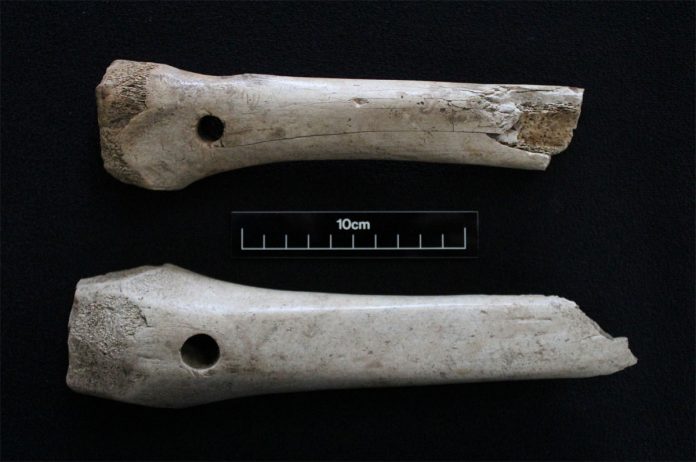Two pieces of worked bone have been recovered during the trial trenching at a fenland site. The two artefacts derive from two different contexts but it was noted they are extremely similar in nature.
Both were made from horse radii and closer inspection indicated that they did not fit together and were from two separate bones. The manner in which they had been worked was, however, almost identical. A considerable amount of trimming had taken place around the articulations to shape or smooth the ends of the bones and a hole had been drilled into the shaft. On one surface, each of the bones were somewhat flattened and quite polished or smoothed. Use wear was present on these surfaces along the length of the shaft and the surface of the trimmed part of the bone was also worn on this side but not on the posterior surface of the bone. Examination under a microscope showed the presence of striations on the smoothed surface parallel to the axis of the shaft, indicating a movement along the length of the shaft.
Favoured interpretation
The current favoured interpretation for these bones is that they were used as sledge runners, with the sled attached via wooden pegs and with the anterior surfaces running along the ground. A number of examples are known from continental Europe and from the Cambridgeshire fenlands. It is thought that such sleds were used by wildfowlers in the fens to cross frozen water in pursuit of birds.
Learn more about Archaeological Solutions


